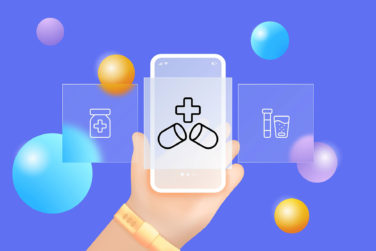What Implementations of AI Have Most Impacted Pharma and Will Impact Pharma in the Future?Pharma?
The world is constantly changing. Every year there is new technology being developed and introduced to the world to make every day tasks simpler, quicker, and easier. More specifically, Artificial Intelligence (AI) has made its way into our everyday lives via navigation, facial recognition, and e-payments. It was only a matter of time before pharmaceutical companies took advantage of this new technology. We are seeing it used on patient profiles to help speed up diagnosis, to accelerate electronic medical records, and connect a network of medical providers to work together and figure out answers to cases all over the world in a fraction of the time. As with any new change there is excitement and concern. PM360 reached out to twelve specialists for their view on what the future holds with the introduction of AI into pharma. We asked:
What implementations of AI are having the greatest impact on pharma now and in the near future? What AI solution in the pipeline are you most excited about?
What is key to keep in mind when preparing to adopt an AI solution into your company or workflow? What challenges do you see rising as AI becomes more prevalent in the pharmaceutical industry?
The opinions expressed by the authors in the Think Tank section are their own and do not necessarily reflect those of their affiliated companies or organizations.
 Andrew Bast
Andrew Bast
Chief Strategy Officer of Greater Than One
abast@greaterthanone.com
A revolution in pharmaceuticals brought on by AI is underway. Most of the conversation focuses on AI’s transformative ability in drug discovery. A study published last June in MDPI’s journal Pharmaceutics mentions the speed, efficiencies, and cost savings that can be realized using AI in the R&D process. This approach is already paying off, with Insilico Medicines generally recognized as bringing the first AI-developed drug into Phase II clinical trials. However, the greatest impact of AI is yet to come.
Much has been justifiably made of how AI is contributing to drug discovery, but discovery is merely the first step. AI-fueled drug discovery doesn’t have much value if it doesn’t incorporate the human factor. Determining who will benefit most from the discovery, finding them quickly and efficiently, and then activating and convincing these patients to start and stay on this treatment is where AI’s
impact is just beginning. This impact on improving human health has the potential to be even more transformative than anything before.
At extremes, some reduce the AI conversation to buzz- worthy, clickbait pitch phrases unfortunately (today’s equivalent of what digital and social experienced in years past). Equally unfortunate, many view AI as an existential threat to their craft choosing to denigrate or dismiss it instead of embracing it to elevate their skillset. Here at GTO, we use AI as part of our Living Ideas approach where ideas grow
and evolve when they are put into the hands of customers. Incorporating insights, beliefs and behaviors, performance benchmarks, and purchase/utilization data, AI is not just predicting how customers may respond, but prescribing solutions to best encourage the right response and behavior. Whether disease is rare or chronic, acute or episodic, how we as humans deal with our afflictions is as important as the treatments used to resolve them. As an industry, we need to lean into AI there as well—to the benefit of all.
 Claire Gillis
Claire Gillis
CEO, VML Health
Claire.gillis@vml.com
You don’t have to look further than its use in oncology to see how AI has the potential to transform pharma’s R&D model. With cancer mortality rates currently trending upwards everywhere, oncology is one of health’s biggest priorities. Two years ago, the US’s ‘Cancer Moonshot’ initiative vowed to halve cancer deaths by 2047, highlighting novel therapies and improved screening as key to achieving it. If we’re to get anywhere near, AI will play a big role in both.
Recent evidence at ASCO and ESMO shows that AI is already shifting the needle in oncology—driving major gains in drug discovery and development, diagnostics and imaging. Machine learning models are transforming pharma’s drug development capabilities, helping companies find new biomarkers and therapeutic targets across multiple tumor types. The approach is unlocking a better understanding of cancer at the molecular level, informing the design of novel medicines and combination therapies, and laying the foundation for personalized drugs.
In the future, AI could be used to scan every mutation or biopsy to create personalized treatment algorithms, or to analyze everyone with cancer to determine individual
mutations, treatments, sequences and potential responses. These opportunities, once described as ‘Star Wars Science’, are closer than we’d ever imagined. With AI evolving, the force is with us.
AI is also revolutionizing diagnostics through its ability to scan medical images at speed and scale to recognize patterns that are undetectable with the human eye. In combination with advances in targeted medicine, improvements to screening can only lead to better cancer care. Pharma’s application of AI in the development of oncology innovation is already helping to improve outcomes in rare and difficult- to-treat cancers. These learnings translate across all diseases and underline why. Whatever comes next, the biggest impact of AI in pharma will likely be felt in R&D.
 Geoff Cunningham
Geoff Cunningham
Head of Data Science, Evaluate, a Norstella company
geoff.cunningham@norstella.com
There are many potential ways for AI to drive change in the pharma market, but there are a couple that I think are likely to happen sooner rather than later that are both tied to R&D efficiencies, which is a critical area for the industry. The first is in the identification of the best drug candidates. We’re seeing interest from pharma and biotech in customized risk modeling for pipeline drugs, moving beyond generic predictions of technical and regulatory success (PTRS).
Industry benchmarks are useful but GenAI can customize data from the past based on a company’s specific pipeline and goals. This can help companies to pinpoint early-stage assets for focus and forecast the cost for getting those assets to market. The critical point here is that GenAI
can take data from the past and use it to generate novelty for the future. This combination of established facts and something brand new has the potential to deliver efficient but truly new therapies.
With the most promising assets more easily recognised, the other area that will be hugely improved by AI is clinicals trials. We’ll be able to increase the efficiency of R&D spending by reducing the chances of a small mistake in design negatively affecting the trial. AI will help define the most appropriate, relevant endpoints for a trial and identify the right candidate profile. There is a whole spectrum of inclusion/exclusion criteria for candidates and getting this wrong can sink a whole trial, costing millions of dollars and slowing the path to market of a potentially life-saving therapy.
Ultimately, AI will mean that for the finite resources we can spend on improved therapies, we will have better products coming to market sooner and therefore more lives saved and improved.
 Geoff Thorne
Geoff Thorne
Chief Technology Officer, Avalere Health
Biopharmaceutical companies have already started to leverage AI in research and development to identify novel targets, map the epidemiology of diseases, optimize clinical trial recruitment, and sort through data. However, many companies have yet to truly leverage the power of the technology to commercialize therapies.
Manufacturers can leverage AI to innovate at every commercial touchpoint. Recently, we conducted research showing that HEOR and market access teams are beginning to use AI to prepare for regulatory decision- making and reimbursement. However, there is plenty more room to use the technology to predict pricing, optimize the collection of RWE, and improve the efficiency and accuracy of data.
Medical Affairs teams can leverage Generative AI (GenAI) to expedite the publication process, drive literature reviews, develop targeted KOL/KEE mapping, and drive KOL/KEE engagement. The combination of traditional and GenAI is also having a huge impact in creating personalized and relevant omnichannel experiences that enhance learning to build relevant and authentic connections between drug developers, customers, and patients.
A good strategy is key for navigating the endless possible applications of GenAI. It’s important to understand your objectives and the potential use cases of the technology to ensure you are not wasting your resources and time on the latest trend. This means evaluating the entire technology ecosystem and upskilling teams with the right talent to build a future-proofed strategy that optimizes the use of the technology. The best way to view GenAI is as an accelerant which, when combined with human expertise and the right use cases, reduces focus on mundane tasks and increases focus on impactful outcomes. It takes being prepared, empathetic, and calculated about the change required to unleash the true power of AI.
 Jacob Aptekar
Jacob Aptekar
Vice President, Trial Design Solutions Lead at Medidata AI
Jacob.Aptekar@3ds.com
Every year, clinical trials generate a wealth of high-quality data, capturing the experiences of millions of patients. Utilizing this clinical trial data can unlock and accelerate research by providing insights into what has worked and what hasn’t. However, as with other sensitive data containing patient identifiable information or intellectual property, access to clinical trial data is limited by regulatory requirements, technical protection protocols, and strict privacy requirements. These barriers are significant enough that sharing of clinical trial data remains rare. Information entered into electronic data capture (EDC) systems remains locked away within individual organizations and systems rendering it largely inaccessible.
One of the most exciting developments to overcome these challenges is the use of generative AI to create simulants. This groundbreaking technology uses algorithms trained on real data to produce synthetic, anonymized information so that researchers can draw on thousands of previous studies without compromising patient privacy.
Leveraging EDC data—complete with covariates, endpoints, and health data captured throughout the clinical trial process—enables simulants to provide rich insights into
the safety and efficacy of new therapeutics. Because this synthetic data is generated artificially or algorithmically, as opposed to patient data, it offers a revolutionary new way to share and access the most sensitive and crucial data. This captures the essence and analytical properties of original data without including any real patient information.
By identifying the patients most likely to drop out of studies, the technology is enabling researchers to develop and adapt their patient engagement and recruitment strategies. It also allows clinical investigators to identify those most at risk for serious adverse events, enabling them to better monitor long-term safety outcomes.
 Abigail Mallon
Abigail Mallon
Chief Patient Experience & People Officer, VMS BioMarketing
abigail.mallon@vmsbiomarketing.com
Patient engagement programs in biopharma are growing at a phenomenal rate, but many manufacturers are not able to gather enough qualitative and quantitative information to prove ROI and justify the spend.
Qualitative feedback that is anecdotal in nature may be lacking in depth and scope across all patient groups. Quantitative information is more easily automated using prescription data, wearables, and patient apps. However, robust insights may be derived only through 1-1 conversations with patients during their medication journey. What challenges did patients experience gaining access to the therapy? What obstacles did they encounter that negatively affected adherence? What frustrations did they have using the website, calling a hotline, or sending an email?
While these critical insights have been difficult to obtain beyond the limited scale of focus groups and in-depth interviews, they can now be augmented using AI tools such as natural language processing (NLP). Using NLP, conversations with patients who are opted-in to the support program are mined for opportunities to improve the patient journey. This enables the biopharma company to see objective data such as phrases indicating affordability issues, insurance roadblocks, or emotional challenges.
With NLP, feedback is captured across thousands of patients at a statistically significant scale.
We are very excited about the ability to gain a new layer of context often missed in pharma’s patient engagement programs today. When aggregated, these insights can illuminate opportunities to address patient-reported issues with a particular medication as well as to evolve patient engagement programs for improved outcomes across a large, distributed patient population. AI tools such as NLP unlock an incredible opportunity for biopharma companies to help patients as they manage all of the inherent challenges of coping with serious, chronic conditions.
 Yahya Anvar, PhD
Yahya Anvar, PhD
Chief of AI Science & Insights Envision Pharma Group
Yahya.Anvar@okra.ai
To truly enable the transformational potential of AI requires investment in the platform, people, and processes as well as creating a holistic understanding of how to leverage technologies to enhance commercialization strategies. Investing in training to ensure that teams are supported throughout the process of implementation and beyond is instrumental in the successful adoption of AI in any organization.
Navigating a rapidly changing landscape warrants evolution in technology. However, simplifying the way technology is made available to users is critical for successful adoption. It’s about simplifying user experience and using AI to empower experts with technology. Trust in AI is essential. As humans, we don’t trust what we don’t understand. Building trust is not solely about the accuracy of our systems but about creating understanding. AI solutions should be explainable and interoperable and provide evidence-based and actionable insights to inform our people.
To utilize AI effectively, it is crucial to ensure that the right platform is being used by the right people and in the right way by asking the right questions. It’s critical to define your vision and understand what you want to achieve to identify how AI can help obtain this. Its use needs to be backed by a team with the knowledge to use it and interpret the insights in a way that delivers value.
We know that for any technology to fulfill its value, it must be implemented in combination with human intellect. Through its ability to process vast amounts of data in real-time, AI accelerates our understanding of robust global data, bridges data gaps, and links disparate sources, providing us with a consolidated view of enriched and meaningful insights. This empowers experts to make informed decisions, implement actions, and achieve smarter and faster outcomes for life sciences and patients.
 Rohit Gupta
Rohit Gupta
Vice President of Analytics Strategy and Transformation, Beghou Consulting rohit.gupta@beghouconsulting.com
Design around use cases, not technology. In other words, don’t adopt AI tools because you are enamored with the technology and want to say you’re “doing AI.” Instead, understand where AI can generate the most short-term value in your business and target those use cases. This approach ensures AI deployments are fit-for-purpose,
as opposed to fit-for-everything, and continually have a positive impact in the organization.
To succeed with this use case-based approach, companies must also be agile and iterative in their deployment of AI tools. Seek quick wins throughout the deployment of AI tools, proving where AI adds value, understanding where it doesn’t, and continually building on successes to expand the use and amplify the impact of AI across the organization.
Achieving enterprise AI maturity requires a team to start small and prove success at each step along the way.
To get started, teams must understand the tools available and have a good handle on their business challenges, so they can identify overlap between AI tool capabilities and those challenges. The goal at this point should be continual progress; AI tools will evolve. A company’s business needs and market position will evolve. Embed AI tools into workflows where it can drive value today and continually assess and explore to identify new areas of opportunity.
“Achieving enterprise AI maturity requires a team to start small and prove success at each step along the way.”
 Karin Hayes
Karin Hayes
Senior Vice President, Analytics Product and Services OptimizeRx
khayes@optimizerx.com
AI-driven tools and Real-World Data (RWD) offer pharmaceutical marketers innovative avenues to engage healthcare professionals (HCPs) and enhance patient outcomes. However, operating within this data-centric landscape poses new challenges for pharma brands: effectively leveraging RWD and AI while safeguarding patient data privacy.
Ensuring proper data governance and procedures within organizations and among partners is paramount for responsible utilization of de-identified healthcare data in AI/ML applications and for safeguarding patient privacy. Building scalable and privacy-compliant workflows and policies across your organization, from data integration and exploration to AI modeling and implementation, is essential. This entails conducting regular assessments and seeking expert determinations from qualified third-party organizations, staying abreast of evolving state and federal privacy legislation, mitigating risks within data flows and privacy policies, and providing comprehensive training to teams on handling and modeling sensitive data. By applying AI to meticulously curated, privacy-compliant datasets, organizations can enhance the efficiency of campaigns while simultaneously addressing concerns regarding data privacy.
Utilizing an AI-powered platform, a pharmaceutical brand adopted a similar strategy, targeting physicians treating patients with an uncontrolled medical condition. By leveraging certified, de-identified healthcare claims data, the brand predicted when physicians would encounter eligible patients and adjusted outreach efforts accordingly within specified windows of eligibility.
This targeted approach allowed the brand to focus on patients whose condition had worsened, simultaneously engaging physicians and enhancing brand awareness and familiarity.
 Tom Mueller
Tom Mueller
VP, Digital Innovation & Product Management Inizio Engage
When determining duration and timing, no single methodology can just spit out the answer after entering a few inputs. Instead, it might be better to ask: How large is the learning gap that must be bridged to ensure a successful launch? The answer influences when you begin your communications, how long they run, and whether those activities are planned in distinct phases or all at once.
Unbranded communications are some of the most rewarding projects that pharma marketers execute, by allowing them to push past the constraints of ISI and compliance that typically influence their deliverables. It is a chance to champion breakthrough science and bring new ideas to their audience.
However, the reality is that the impact of unbranded work is often diminished by a conservative regulatory environment. This leaves a void between the promise of what a breakthrough scientific discovery could mean and the inability to fully communicate its relevance.
Determining Your Risk Tolerance
The true question shaping unbranded approaches: What level of risk is your organization willing to manage at this phase of development? Real consequences come with the answer. By assuming little risk early on, you may squander an opportunity to build brand equity before launch (think generic disease-state education). This strategy pre-positions your product in the context of its competitors and leaves it fighting for an incremental sliver of the current conversation.
Assuming greater risk early on may take more resources, but the benefits far outweigh the effort. Take an MOA story for instance; being bold allows you to reframe what is already known in the context of new, cutting-edge findings. Selecting the right partnerships (both internally and externally) can provide the courage and credibility to help an emerging story find its voice and to create a differentiated and ownable foundation for launch.
 Julie Pilon
Julie Pilon
Chief Strategy Officer, IPG Health
Julie.Pilon@ipghealth.com
In this dawning age of generative AI, a not-so-obvious challenge is the effect on the search landscape as more and more people use generative AI platforms like ChatGPT, Copilot, and Gemini to find information instead of traditional search engines. Many people will not go beyond the generative AI responses, so traffic to the sources of knowledge—like the websites and the content we create—will suffer. The AI models and platforms will be the entities reading our work becoming our “new audience,” so how do we make sure that they become part of our target consideration process and develop a new field of AI optimization?
Speaking of using AI for search, if you ask these generative AI chatbots how AI will change our industry, across all the platforms the same top obvious insights bubble to the surface: data privacy, biases and discriminatory responses, data quality, etc. These are no doubt challenges we’ll face in adapting our work to best utilize AI-powered tools, but the very fact that we can all so easily get these core basic challenges in a search like this poses another dilemma. Seemingly AI empowerment can be a trap, lulling you into a false sense of completion.
Generative AI offering up first drafts all around could lead to a lot of lazy ideas flooding the market—too many versions of vanilla. That’s not what works in the market.
At the end of the day, we need to invent new ways of getting people’s attention and that’s what we’re all about as an industry; no change there. We’re in the big idea business, moving culture, creating movements and AI alone can’t do that for us. Human creativity cannot be replaced but will be accelerated and expanded by the partnership AI can offer.
“It’s crucial pharma companies invest in compliany solutions that ensure their patients and company data will be secure.”
Emmanuel Walckenaer
CEO, Yseop
As AI becomes more prevalent across pharma, expect challenges around stricter security requirements and pending regulations, which are anticipated to be rolled-out worldwide this year. Given its significant advantages in addressing automation and efficiencies, including its ability to create compelling, human-like content, AI is already proving to be valuable across pharma.
As AI in pharma becomes more prevalent, companies will need to keep up with new laws, mitigate potential regulatory requirement risks, and prepare their organizations for change management initiatives. It’s no longer a question of “will my firm implement AI solutions to deal with repetitive workflows?” Instead, it’s “how can I better prepare my organization to implement these changes seamlessly?”
With the increased adoption of AI technologies in the global AI healthcare market, which is set to reach $208.2 billion by 2030, pharma companies must protect the integrity and confidentiality of patient data. The consequences of not protecting this sensitive information includes losing public trust, significant financial repercussions, and damage to the industry’s reputation.
As regulatory bodies throughout the world plan to introduce more uniform laws to provide guidance on the use of AI in the Pharma industry, companies will need to prepare to reveal more information about the proprietary foundation models they are using in their training data. It’s crucial pharma companies invest in compliant solutions that ensure their patients and company data will be secure. AI is revolutionizing pharma, and ultimately bringing better drugs to patients faster, but companies will need to stay agile when adapting their AI applications to meet rapidly evolving laws and regulations.








